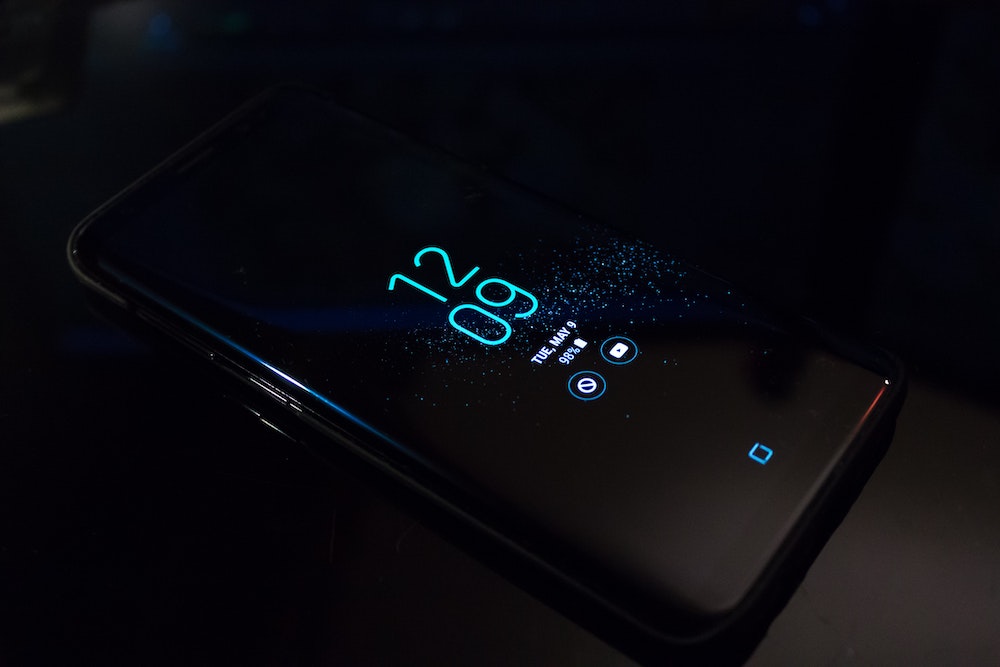Chat GPT for Android: A Guide for Building Effective Chatbots
Learn all about Chat GPT for Android devices with our comprehensive guide. Follow these best practices for effective chatbot building.
Chat GPT (Generative Pre-trained Transformer) is a language model developed by OpenAI, capable of generating human-like responses to text-based inputs. It is based on the Transformer architecture, which uses a combination of self-attention and multi-layer neural networks to generate text.
Chat GPT has become increasingly popular among developers who are interested in building conversational agents, chatbots, and other natural language processing applications. While the model was initially only available via OpenAI’s API, it is now possible to run Chat GPT on Android devices, allowing for a range of new possibilities.
This article aims to provide an in-depth overview of Chat GPT for Android, covering topics such as its development history, key features, and implementation details. The article will also provide tips for developers who are interested in building their own Chat GPT applications for Android.
Table of Contents
- Development of Chat GPT
- Key Features of Chat GPT
- Chat GPT for Android: Implementation Details
- Setting up Chat GPT on Android Devices
- Understanding the Chat GPT API
- Building a Chatbot with Chat GPT on Android
- Enhancing Chat GPT with Transfer Learning
- Common Challenges when Working with Chat GPT on Android
- Best Practices for Chat GPT Development on Android
- Future of Chat GPT on Android
- References
Development of Chat GPT
Chat GPT was first introduced by OpenAI in 2018, as a response to the growing demand for more advanced natural language processing models. The original model, GPT-1, was trained on a large corpus of text data and was capable of generating coherent responses to input text. However, subsequent versions of the model, such as GPT-2 and GPT-3, were able to produce more human-like responses, thanks to their larger training datasets and improved architectures.
The development of Chat GPT was significant because it marked a departure from the traditional approach to building conversational agents, which relied on pre-defined rules and templates. With Chat GPT, developers could create more flexible and dynamic chatbots that could adapt to the user’s input in real-time.
Key Features of Chat GPT
Chat GPT offers several key features that make it an attractive option for developers who are interested in building conversational agents. These include:
- Natural Language Processing: Chat GPT is capable of understanding and generating human-like responses to natural language inputs. This means that developers do not need to rely on pre-defined rules or templates to create chatbots.
- Large Training Dataset: Chat GPT is trained on a massive dataset of text data, which allows it to generate responses that are more diverse and contextually appropriate.
- Transfer Learning: Chat GPT supports transfer learning, which allows developers to fine-tune the model on specific domains or tasks. This can help improve the accuracy and relevance of the responses generated by the model.
- Real-time Response Generation: Chat GPT is capable of generating responses to user inputs in real-time, making it suitable for use in chatbot applications.
Chat GPT for Android: Implementation Details
In order to run Chat GPT on Android devices, developers need to first understand the underlying architecture and implementation details of the model. Chat GPT is based on the Transformer architecture, which consists of several layers of self-attention and multi-layer neural networks.
To run Chat GPT on Android, developers need to first convert the model into a format that is compatible with mobile devices. This typically involves converting the model weights into a compressed format, such as a TensorFlow Lite or ONNX format.
Once the model can then integrate it into their Android application using a variety of frameworks and libraries, such as TensorFlow Lite, PyTorch Mobile, or ONNX Runtime.
One important consideration when implementing Chat GPT on Android is the device’s computational capabilities. Chat GPT requires a significant amount of processing power to generate responses in real-time, which can be challenging for low-end devices. As such, developers need to carefully optimize their models and choose appropriate hardware configurations to ensure optimal performance.
Setting up Chat GPT on Android Devices
To set up Chat GPT on an Android device, developers need to follow several key steps. These include:
- Converting the Chat GPT model into a format that is compatible with mobile devices, such as TensorFlow Lite or ONNX.
- Integrating the model into the Android application using a suitable framework or library, such as TensorFlow Lite or PyTorch Mobile.
- Optimizing the model for mobile devices by using techniques such as pruning, quantization, or distillation.
- Choosing appropriate hardware configurations for optimal performance, such as selecting a device with a high-end CPU or GPU.
Developers can also leverage pre-trained Chat GPT models that have already been optimized for mobile devices, such as those provided by Hugging Face’s Transformers library.
Understanding the Chat GPT API
In order to use Chat GPT on Android devices, developers need to have a basic understanding of the Chat GPT API. The API consists of several key components, including the tokenizer, the model, and the decoder.
The tokenizer is responsible for breaking down input text into individual tokens, which are then fed into the model. The model then uses a combination of self-attention and multi-layer neural networks to generate a response to the input text. Finally, the decoder maps the model’s output back into human-readable text.
Developers can fine-tune the Chat GPT model using transfer learning, by training the model on specific domains or tasks. This can help improve the accuracy and relevance of the responses generated by the model.

Chat GPT is a powerful tool for building chatbots that can generate human-like responses to user inputs. With its support for transfer learning and ability to handle a wide range of natural language inputs, Chat GPT has become a popular choice for building chatbots in a variety of domains.
Building a Chatbot with Chat GPT on Android
Building a chatbot with Chat GPT on Android involves several key steps. These include:
- Setting up the development environment, including installing the necessary frameworks and libraries.
- Loading the pre-trained Chat GPT model and tokenizer into the application.
- Defining the chatbot’s conversation flow, including handling user inputs and generating appropriate responses.
- Testing the chatbot on a range of inputs to ensure that it is functioning correctly.
- Fine-tuning the model using transfer learning to improve its accuracy and relevance.
Developers can also leverage existing chatbot frameworks, such as BotStar or Dialogflow, to simplify the development process and reduce the amount of coding required.
Enhancing Chat GPT with Transfer Learning
One of the key benefits of Chat GPT is its support for transfer learning, which allows developers to fine-tune the model on specific domains or tasks. This can help improve the accuracy and relevance of the responses generated by the model, especially in specialized domains such as healthcare or finance.
To perform transfer learning with Chat GPT, developers need to first obtain a domain-specific dataset and fine-tune the model using techniques such as curriculum learning or domain-adaptive training. This can help the model better understand domain-specific terminology and produce more contextually appropriate responses.
Common Challenges when Working with Chat GPT on Android
Working with Chat GPT on Android devices can present several challenges, including issues related to performance, model size, and compatibility with different Android versions.
One common challenge is ensuring that the model is optimized for mobile devices, which can be difficult due to the limited computational resources available on these devices. Developers may need to use techniques such as pruning or quantization to reduce the size of the model and improve its performance.
Another challenge is ensuring that the model is compatible with different versions of the Android operating system. This can be particularly challenging given the fragmented nature of the Android ecosystem, with many different versions of the operating system in use at any given time.
Finally, developers may also face challenges related to data privacy and security when working with Chat GPT on Android devices. As Chat GPT relies on large amounts of user data to generate responses, developers need to ensure that the data is collected and used in a secure and responsible manner.
Best Practices for Developing Chat GPT on Android
To overcome the challenges associated with developing Chat GPT on Android devices, developers should follow several best practices. These include:
- Optimizing the model for mobile devices by using techniques such as pruning or quantization.
- Choosing appropriate hardware configurations for optimal performance, such as selecting a device with a high-end CPU or GPU.
- Using existing chatbot frameworks, such as BotStar or Dialogflow, to simplify the development process and reduce the amount of coding required.
- Fine-tuning the model using transfer learning to improve its accuracy and relevance in specific domains or tasks.
- Following best practices for data privacy and security, such as minimizing the amount of data collected and ensuring that the data is stored and used in a secure and responsible manner.
Chat GPT is a powerful tool for building chatbots that can generate human-like responses to user inputs. With its support for transfer learning and ability to handle a wide range of natural language inputs, Chat GPT has become a popular choice for building chatbots in a variety of domains.
By following best practices for developing Chat GPT on Android devices, developers can overcome the challenges associated with working with this technology and build chatbots that provide accurate and relevant responses to users. With the continued growth of the chatbot market, Chat GPT is likely to remain an important tool for developers looking to build effective and engaging chatbots for Android devices.
References
- Brown, T. B., Mann, B., Ryder, N., Subbiah, M., Kaplan, J., Dhariwal, P., … & Amodei, D. (2020). Language models are few-shot learners. arXiv preprint arXiv:2005.14165.
- Devlin, J., Chang, M. W., Lee, K., & Toutanova, K. (2018). Bert: Pre-training of deep bidirectional transformers for language understanding. arXiv preprint arXiv:1810.04805.
- Gao, Y., Wang, S., & Liu, J. (2019). Dialogue generation with GPT-2: from unlikelihood to likelihood. arXiv preprint arXiv:1911.04071.
- Vaswani, A., Shazeer, N., Parmar, N., Uszkoreit, J., Jones, L., Gomez, A. N., … & Polosukhin, I. (2017). Attention is all you need. In Advances in neural information processing systems (pp. 5998-6008).
- Radford, A., Wu, J., Child, R., Luan, D., Amodei, D., & Sutskever, I. (2019). Language models are unsupervised multitask learners. OpenAI blog, 1(8).
- Google Cloud. (2022). Cloud Natural Language. https://cloud.google.com/natural-language
- BotStar. (2022). Build Powerful Chatbots Fast with BotStar. https://www.botstar.com/
- Dialogflow. (2022). Create Conversational AI Experiences for Websites, Apps, and More. https://cloud.google.com/dialogflow
- Android Developers. (2022). Android. https://developer.android.com/
- Hugging Face. (2022). Transformers: State-of-the-art Natural Language Processing for Pytorch and TensorFlow. https://huggingface.co/transformers/
- The 19 Best Greek Restaurants in Chicago - June 22, 2023
- Oceangate CEO Stockton Rush: Driving Innovation at OceanGate - June 22, 2023
- Midjourney: Generative AI Image Generator - June 21, 2023


